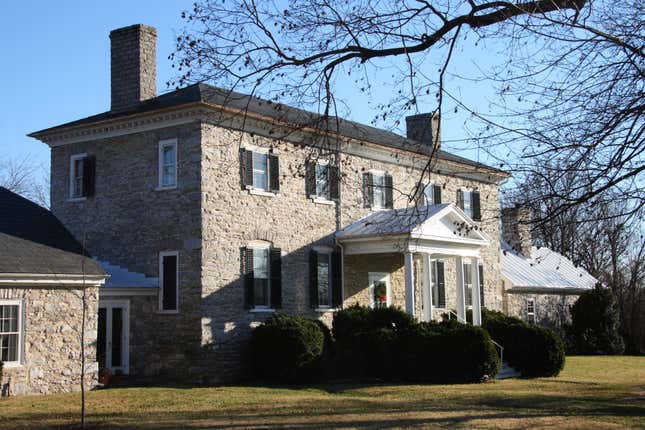
Twenty-five years ago, a team of researchers excavated a cemetery in West Virginia hoping to find George Washington’s little brother. Five graves were unearthed, and after testing small bones retrieved from these burial sites, tentative identities have been assigned. A new DNA analysis has now certified three sets of identities from the site.
Two of the individuals were George Washington’s grandnephews—George Steptoe Washington and Samuel Walter Washington—and another set of bones belonged to their mother, Lucy Payne Washington. The team’s ID’ing of the bone remains was published today in iScience.
“This particular case gave us an opportunity to test methods for extended kinship prediction that we developed using a set of known, degraded DNA samples needing identity confirmation,” said Charla Marshall, a molecular anthropologist at the Armed Forces Medical Examiner System’s Armed Forces DNA Identification Laboratory, and senior author of the study, in a Cell release.
The research team used Y chromosome DNA to study the paternal relationships in the Washington family tree. A new method of sequencing genetic data allowed the team to study nearly 100,000 single-nucleotide polymorphisms, or SNPs, to better predict ancestry between individuals. SNPs are specific combinations of base pairs along the DNA strand.
“These SNP methods will provide us with a method of positive identification from nuclear DNA,” Marshall added. “Very importantly, these methods will allow us to expand our pool of viable family reference sample donors to 3rd and 4th degree relatives in an effort to increase the number of DNA-assisted identifications, particularly those of past conflicts such as World War II, Korea, Cold War, and Southeast Asia/Vietnam.”

George Washington didn’t have any children of his own, though he and Martha Washington raised her children from a previous marriage, their children, and a few nieces and nephews. Washington had nine siblings, three of whom were brothers, as noted by Mount Vernon’s website. One of those brothers was Samuel Washington, who owned the Harewood Estate in northeastern West Virginia. The historical site was visited by Washington and the Marquis de Lafayette, and James and Dolley Madison got married there. And Harewood’s cemetery yielded the bone remains that were first studied a quarter-century ago.
The researchers used reference DNA from Samuel Walter Washington, a known descendent of Samuel Washington, to confirm the genetic relationship of the deceased individuals. There are plenty of Samuels in the Washington family tree, but the original Samuel Washington’s grandson was Dr. Samuel Walter Washington, whose grandson was Samuel Walter Washington, whose grandson is the Samuel Walter Washington the team used for reference DNA.
Still following? Good. Here’s a little fun fact for keeping up: Lucy Payne—the sister of Dolley Madison and the mother of the aforementioned grandnephews, whose remains were also identified in this study, has the recognition of being the first bride to be married in the White House. Payne married Supreme Court Associate Justice Thomas Todd there on March 29, 1812—212 years ago tomorrow!
The identification is a marvel of DNA testing, which has its pitfalls when it comes to reviewing one’s own ancestry and even in medical applications. But in this case, the analysis proved out, and confirmed some distal branches in the family tree of America’s most famous founding father.
More: Highest-Resolution Images of DNA Reveal It’s Surprisingly Jiggly